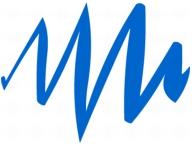

  | |
The Brush tool draws brushlike strokes, as if you were painting. It lets you create special effects, including calligraphic effects. You can select a brush size and shape using the Brush tool modifiers.
Brush size for new strokes remains constant even when you change the magnification level for the Stage, so the same brush size appears larger when the Stage magnification is lower. For example, suppose you set the Stage magnification to 100% and paint with the Brush tool using the smallest brush size. Then, you change the magnification to 50% and paint again using the smallest brush size. The new stroke that you paint appears 50% thicker than the earlier stroke. (Changing the magnification of the Stage does not change the size of existing brush strokes.)
You can use an imported bitmap as a fill when painting with the Brush tool. See Breaking apart groups and objects.
If you have a Wacom pressure-sensitive tablet connected to your computer, you can vary the width and angle of the brush stroke by using the Brush tool Pressure and Tilt modifiers, and varying pressure on the stylus.
The Pressure modifier varies the width of brush strokes when you vary the pressure on the stylus. The Tilt modifier varies the angle of brush strokes when you vary the angle of the stylus on the tablet. The Tilt modifier measures the angle between the top (eraser) end of the stylus and the top (north) edge of the tablet. For example, if you hold the pen vertically against the tablet, the Tilt is 90° . The Pressure and Tilt modifiers are both fully supported for the eraser function of the stylus.

A variable-width brush stroke drawn with a stylus
 To paint with the Brush tool:
To paint with the Brush tool:Paint Normal paints over lines and fills on the same layer.
Paint Fills paints fills and empty areas, leaving lines unaffected.
Paint Behind paints in blank areas of the Stage on the same layer, leaving lines and fills unaffected.
Paint Selection applies a new fill to the selection when you select a fill in the Fill modifier or the Fill box of the Property inspector. (This option is the same as simply selecting a filled area and applying a new fill.)
Paint Inside paints the fill in which you start a brush stroke and never paints lines. This works much like a smart coloring book that never allows you to paint outside the lines. If you start painting in an empty area, the fill doesn't affect any existing filled areas.
  | |